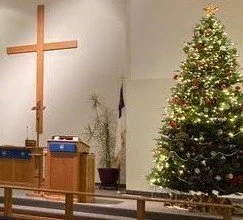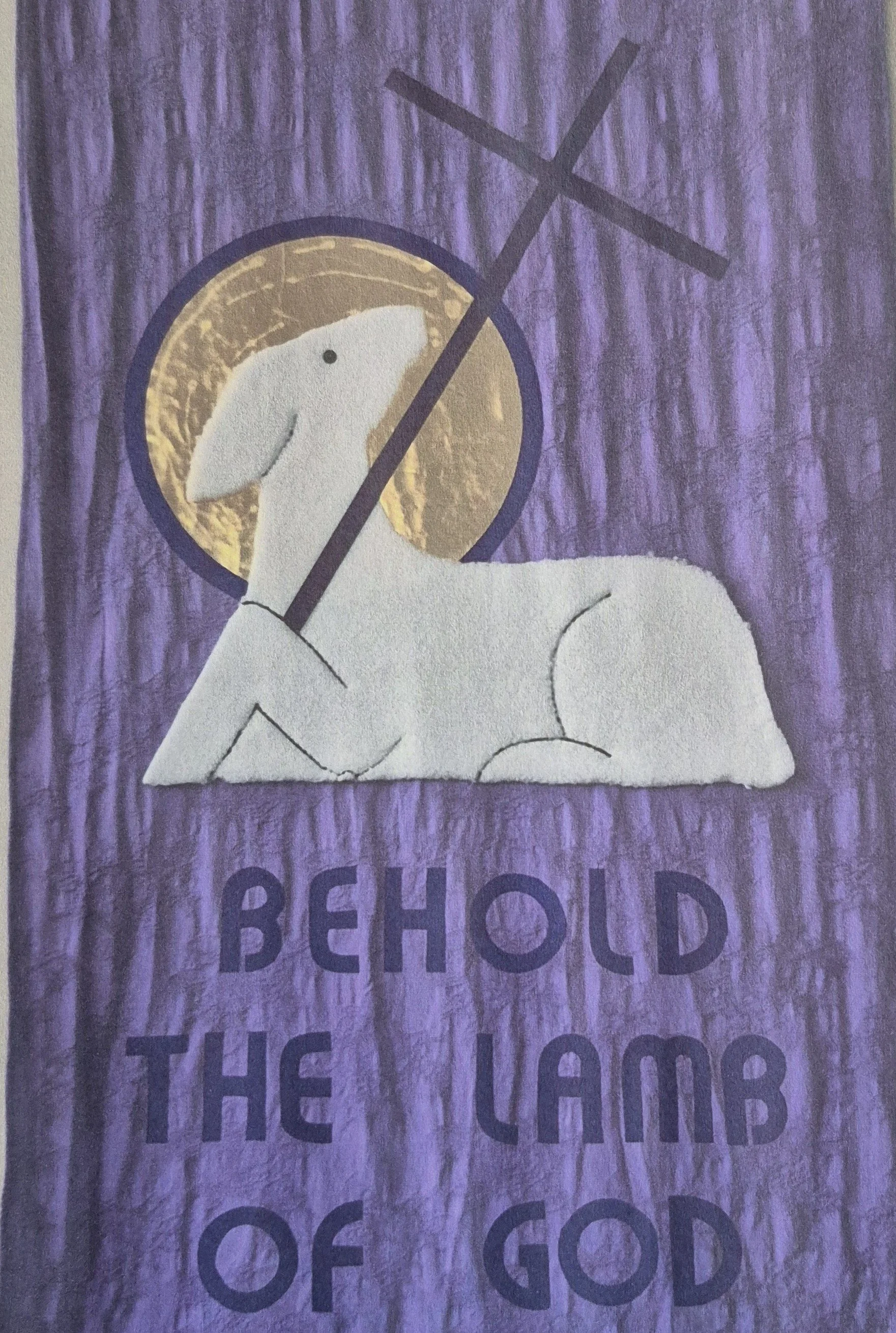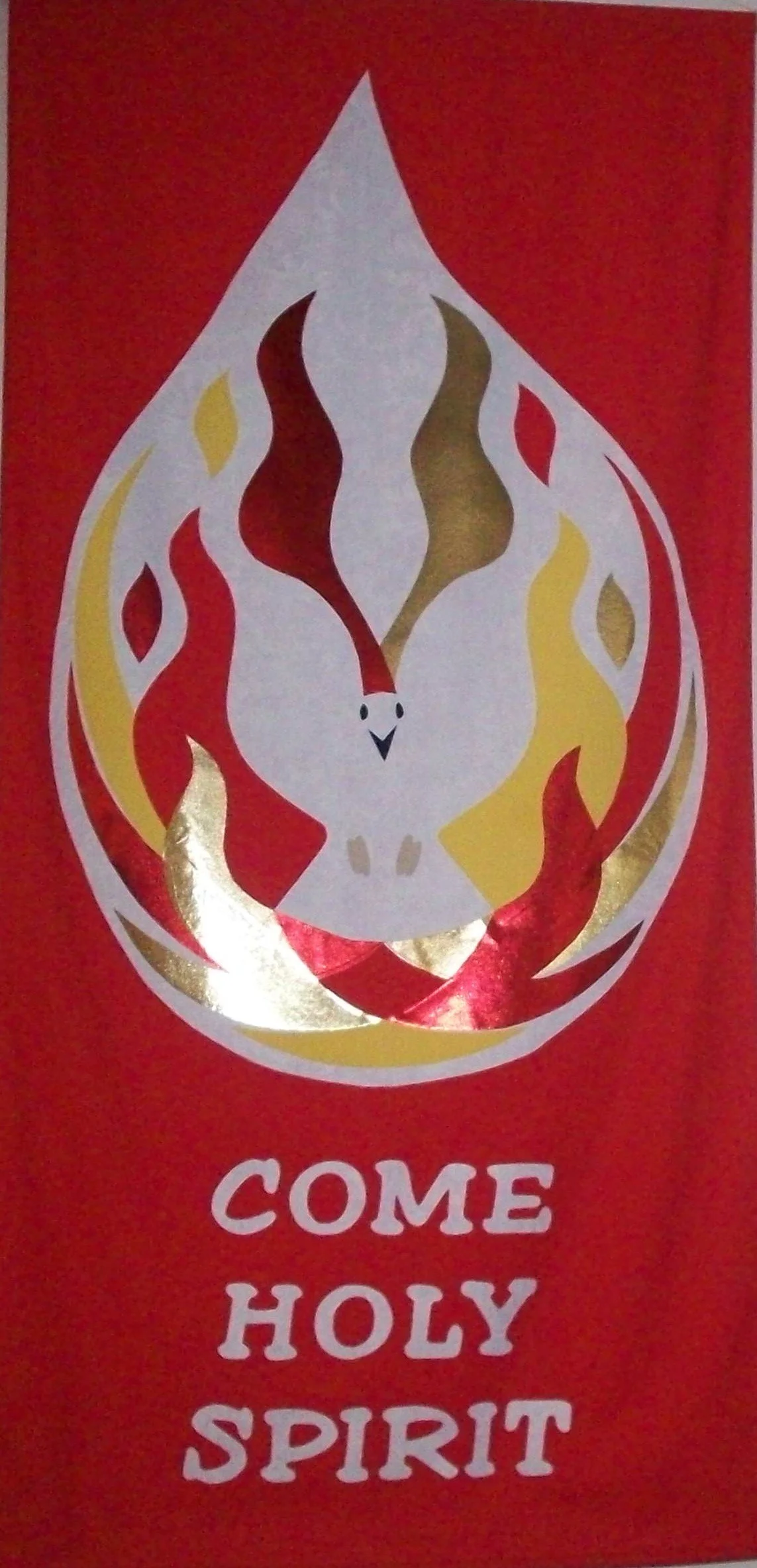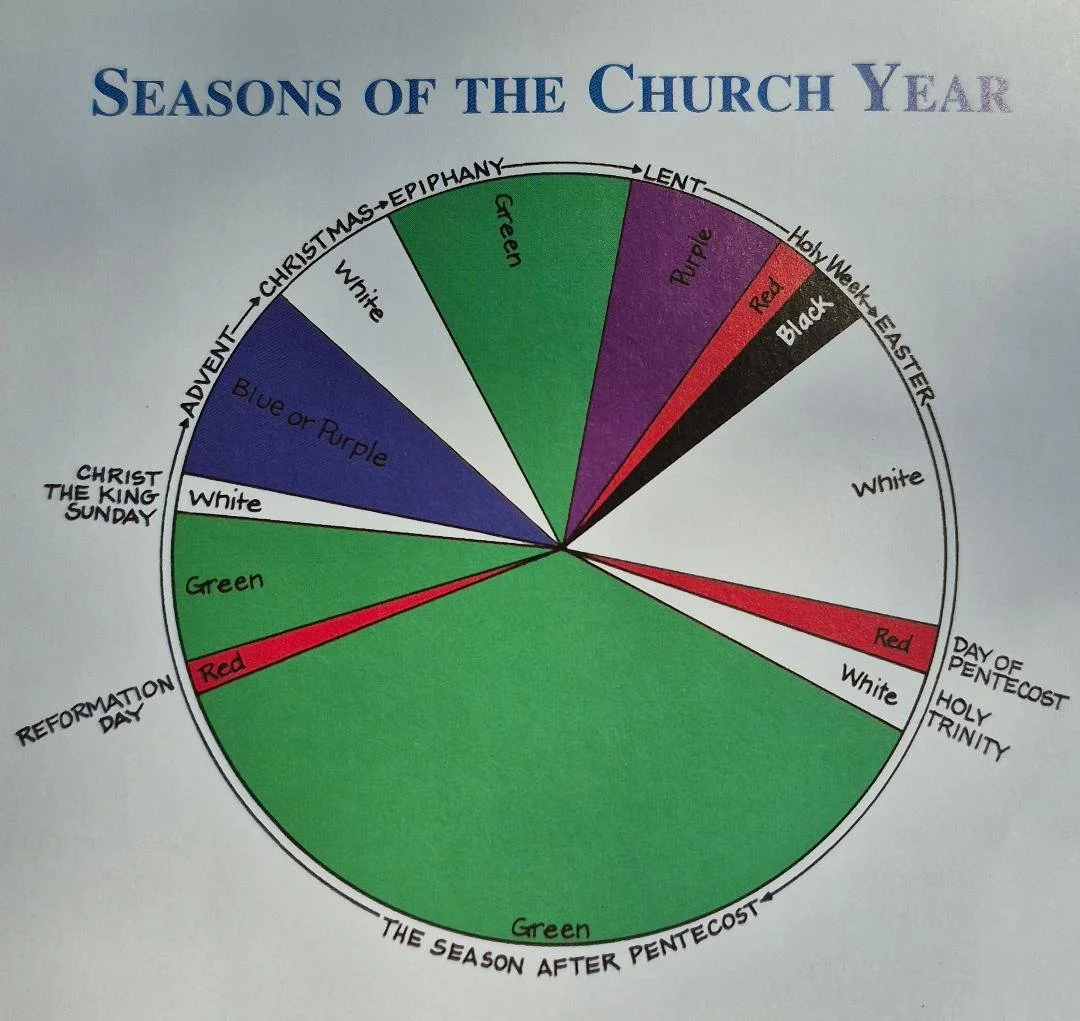The Liturgical Year of the Lutheran Church
The Church Year, or Liturgical Year, begins in November or December and centers upon events in the life of our Lord Jesus.
ADVENT is the first season of the church year, beginning four weeks before Christmas on the Sunday closest to November 30 and ending on Christmas Eve.
Purple is the traditional color of Advent. It reminds us that Jesus was born to be our King. Some churches choose to use Blue, the color of hope and anticipation.
The Biblical lessons during Advent feature words of the Old Testament prophets telling God’s people that He would send a Savior.
Advent means “coming” or “drawing near”. This is a time of waiting and preparation for the arrival of Christ.
An Advent Wreath is used to mark the four weeks of Advent. The wreath has four candles. One candle is lit on the first week and an additional candle is lit each week. Some churches add a “Christ candle” in the middle of the wreath, which is lit on Christmas Day.
CHRISTMAS begins on December 25 and lasts 12 days, through January 5. Christmas Day marks the celebration of Jesus’ birth.
Christmas trees may be placed in the sanctuary or other places throughout the church building. Nativities or manger scenes featuring the Baby Jesus, Mary, Joseph, Shepherds, and others serve as reminders of the Christmas account.
White is the color for Christmas and it’s season. White symbolizes the purity, light and joy that the birth of God’s Son brings to His people.
The music of Christmas is joyful and festive, celebrating the birth of the long-awaited King.
Candles are placed around the sanctuary to celebrate the light and hope that the birth of Jesus brought to the world. Flowers, greenery and other decorations are used to beautify the church and help express the joy of the season.
EPIPHANY is a celebrated on January 6. The number of weeks in the season varies, depending on when Lent begins. Epiphany ends on Ash Wednesday, the first day of the Season of Lent.
White is the color of Epiphany. Green may is be used from the second Sunday until the Eve of the Transfiguration, which is the Sunday before Ash Wednesday. The color green symbolizes life and growth.
Epiphany means “a manifestation” or “showing forth”. The season emphasizes how God revealed Himself to the world though Christ - to the Wise Men, at Jesus’ Baptism, through the words and deeds of His life, and at the Transfiguration (when Jesus revealed His divine glory to His disciples).
The season of Epiphany is one of great rejoicing and gladness because Jesus, the Light of the world, came to save all people.
The Epiphany season includes the Baptism of our Lord, commemorated on the second Sunday. The Final Sunday is the Transfiguration of our Lord.
LENT begins on Ash Wednesday and lasts for 40 days. Lent is a time of preparation, prayer, and quiet reflection. Ash Wednesday could arrive as early as Feb. 6 or as late as Mar. 10. It’s always 46 days before Easter.
Purple, a color of royalty, is the liturgical color of the season of Lent.
During Lent we have special mid-week services. People come to worship just like they do on Sundays. We prepare ourselves for what will happen during Holy Week.
Holy Week begins on Palm Sunday, a time of joy and celebration. Jesus rode triumphantly into the city on a donkey. The people cheered and spread garments and palm branches on the road before him. Maundy Thursday Jesus celebrated the Last Supper with his disciples.
Holy Week ends with great sadness on Good Friday. The color changes to Black. Jesus hangs on the cross, paying the price for the sins of all humanity. But it’s OK, Sunday is coming!
EASTER!! The season begins with a celebration of the resurrection of our Lord and lasts for 50 days. The date of Easter changes from year to year. It occurs on the first Sunday after the first full moon following the spring equinox.
On Easter we celebrate the day Jesus overcame death and rose from the dead. God’s plan for our salvation was fulfilled. Because of Christ’s death and resurrection, all who believe in Him will live eternally in heaven.
White, symbolizing joy, is the color of Easter. Gold, which stands for glory may also be used.
Flowers, especially Easter Lilies, decorate the sanctuary as God’s people celebrate new life in Christ.
On the 40th day after Easter, the church recalls the return of Christ to His Father in heaven. This day is Ascension Day.
PENTECOST is the 50th day after Easter. On this day the Holy Spirit came to Jesus’ disciples so they could carry on His work and establish the church throughout the world.
The primary color for Pentecost is Red for the zeal and fire. Flames of fire representing the Holy Spirit are often used to symbolize Pentecost. Holy Trinity Sunday, the first Sunday after Pentecost is White, celebrating the mystery of God known as the Trinity. There is one God but three persons, Father, Son, and Holy Spirit. The liturgical color for the remainder of the season is Green, symbolizing this is a time of growth for the church.
The Sundays after Pentecost focus on the ministry and teachings of Jesus. It is a season of growth for the church, as the people of God listen to the call of the Holy Spirit and respond in faith.
Christ the King Sunday is the last Sunday of the church year. It focuses in the Second Coming of Christ. The phrases “King of kings” and “Lord of lords” echo in the selected music. The liturgical color is White.












